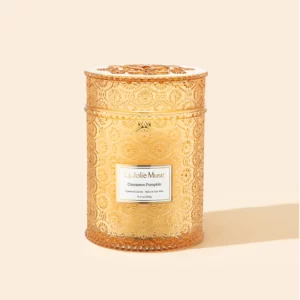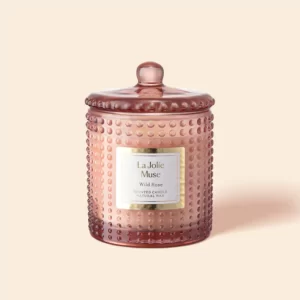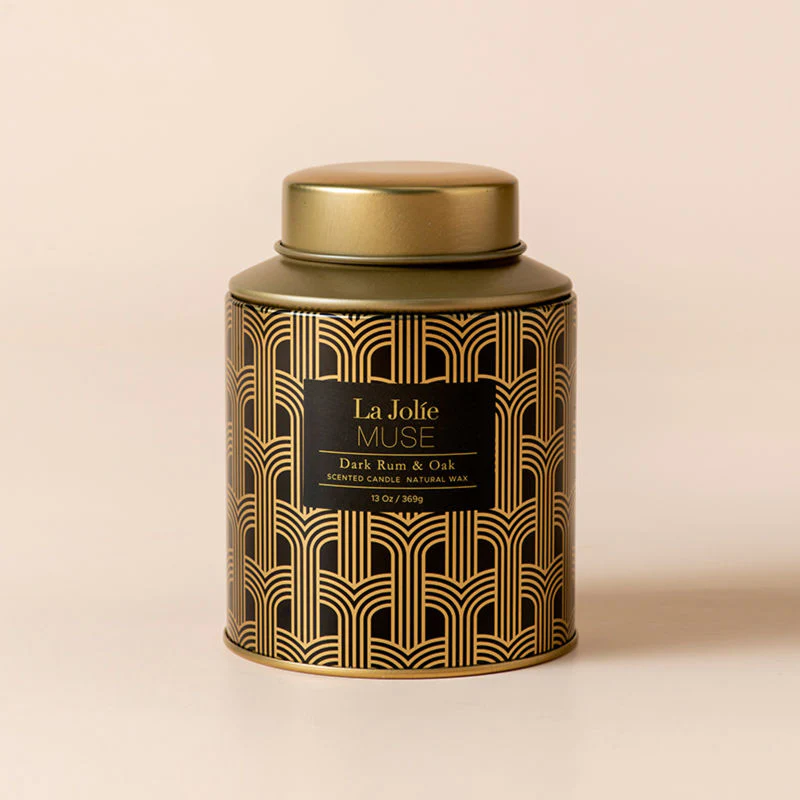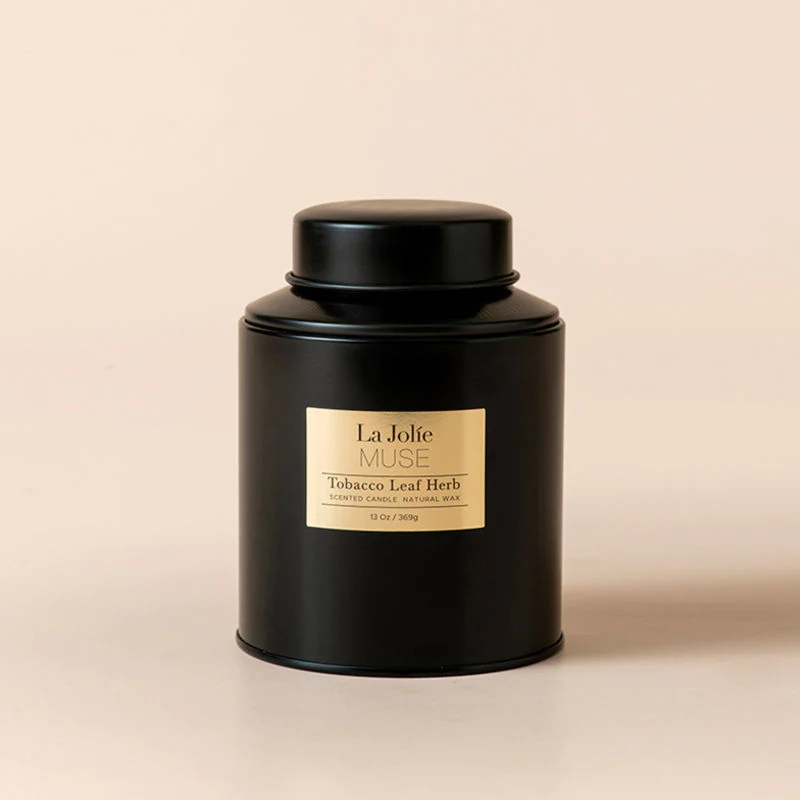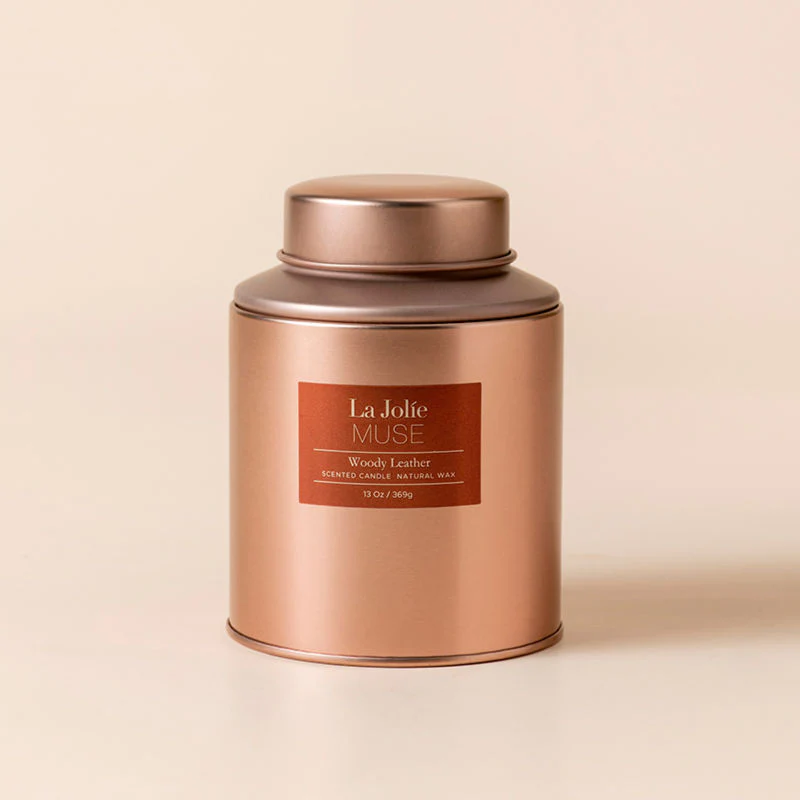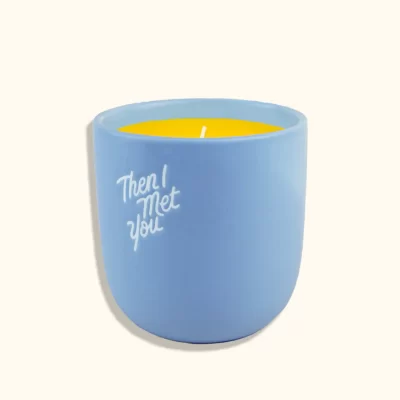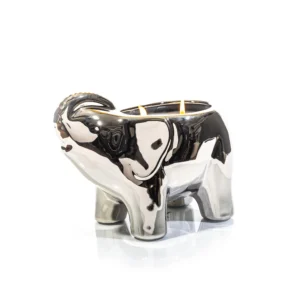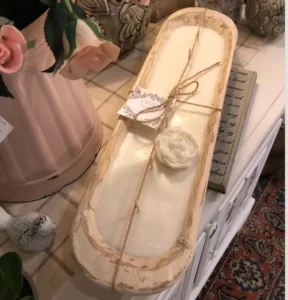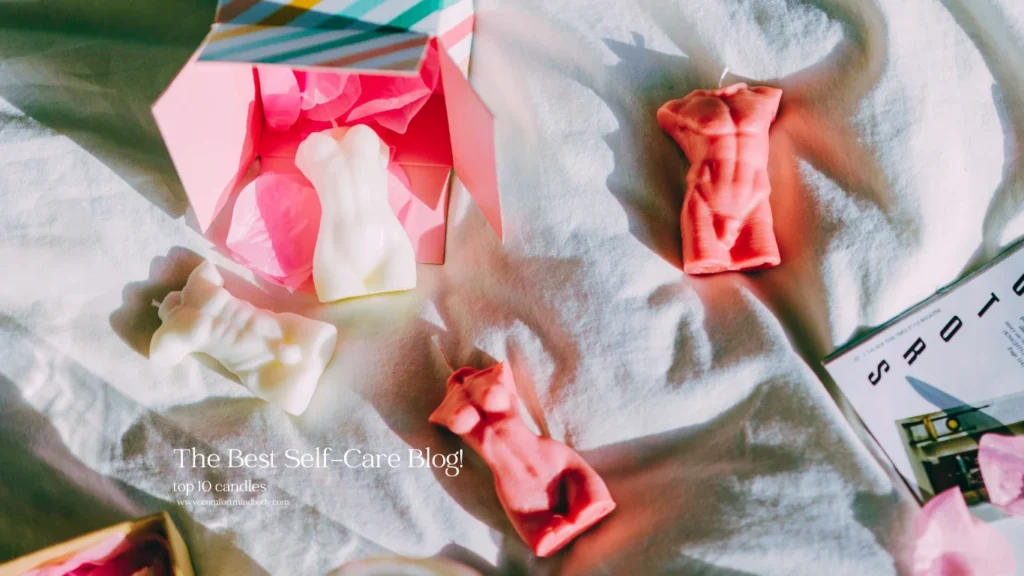Table of Contents
ToggleThe Ultimate Guide to Candle-Making
Candle-making is a craft that has stood the test of time. Candle-making started in ancient times. Today, it is a popular hobby and a profitable business. This art form still captivates us. But what is it about candle-making that draws us in?
Perhaps it’s the allure of creating something beautiful and functional with our own hands. Or the joy of customizing our candles with our favorite fragrances and colors. Maybe it’s the satisfaction of seeing our creations light up a room, both literally and figuratively. Or the potential to turn our passion into a thriving business.
Whatever your reasons may be, this guide is here to help you on your candle-making journey. We’ll start with the basics, covering the essential supplies and steps involved in making your first candle.
We will then explore the more complex parts of candle making. This includes picking the right wax and wick, controlling the temperature, and adding scents and colors. Plus, we will also look at how to customize your candles. This includes making unique shapes and designs. You can also layer scents and add decorative elements.
If you want to turn your hobby into a business, we will give you tips on selling your candles. This includes legal issues and marketing strategies. Whether you are a beginner making your first candle or an experienced maker wanting to improve, this guide is for you.
So let’s embark on this exciting journey together. Welcome to the ultimate guide to candle making.
The Allure of Candle-Making
Candle-making is a craft that has fascinated humans for centuries. It’s a process that combines art and science, creativity and precision. But beyond the process itself, it’s the end product that truly captivates us.
Candles have a way of transforming spaces, creating ambiance, and evoking emotions. They can be a source of light, a symbol of celebration, or a tool for relaxation.
And with the ability to customize them in endless ways, the possibilities are truly limitless. So let’s delve into the world of candle making and discover what makes this craft so alluring.
The History and Evolution of Candle-Making
Candle-making dates back to ancient times. The earliest candles were made from tallow, a byproduct of beef fat, by the Romans. Over time, the materials used in candle-making evolved.
Beeswax candles came first in the Middle Ages. Then, spermaceti candles appeared in the 18th century. Finally, paraffin candles were introduced in the 19th century. Today, we have a wide range of waxes to choose from, including soy, palm, and coconut wax, each with its unique properties.
The methods of candle-making have also evolved, from hand-dipping and molding to modern pouring techniques. Even with these changes, candle-making is still the same. It is a craft that needs patience, skill, and some creativity.
Why Make Your Candles?
There are many reasons why people choose to make their candles. For some, it’s a creative outlet, a way to express their creativity and make something beautiful with their own hands.
For some, making candles is a practical hobby. It allows them to create high-quality candles that fit their tastes. These homemade candles are often cheaper than those bought in stores.
And for many, it’s simply a fun and relaxing hobby, a way to unwind and enjoy the simple pleasure of making something from scratch. Whatever your reasons may be, making your candles can be a rewarding and fulfilling experience.
Candle-Making Supplies and Setup
Before you can start making candles, you’ll need to gather your supplies and set up your workspace.
This chapter will guide you through the essential tools and materials you’ll need, as well as tips for creating a safe and efficient workspace.
Essential Tools and Materials
The tools and materials you’ll need for candle making can vary depending on the type of candles you want to make. However, there are some essentials that every candle maker should have:
- Wax: This is the main component of your candle. There are many types of wax to choose from, including paraffin, soy, beeswax, and palm wax.
- Wicks: These are the heart of your candle. They come in different sizes and types, and the one you choose can affect how your candle burns.
- Fragrance oils: These are used to scent your candles. There are countless fragrances to choose from, so you can create candles that smell exactly how you want them to.
- Dyes: These are used to color your candles. They come in various forms, including liquid, powder, and blocks.
- Molds or containers: These will shape your candles. You can use traditional candle molds, or get creative with different types of containers.
- Other tools: You will need a double boiler or melting pot to melt your wax. You will also need a thermometer to check the wax temperature. A scale is needed to measure your ingredients. Finally, use wick holders to keep your wicks centered while your candles cool.
Creating a Safe and Efficient Workspace
When it comes to setting up your workspace for candle making, safety should be your top priority. Here are some tips to help you create a safe and efficient workspace:
- Choose a well-ventilated area. Wax and fragrance oils can give off fumes when heated. It is important to work in a space with good airflow.
- Keep your workspace clean: Spilled wax or oils can be a fire hazard, so make sure to clean up any spills immediately.
- Have a fire extinguisher nearby: While it’s unlikely that you’ll have a fire, it’s always better to be prepared. Organize your tools and materials. Keeping everything you need close by makes candle-making easier and more fun.
- Protect your surfaces: Wax can be hard to remove when it hardens. Cover your work surface with newspaper or a silicone mat.
- Take breaks: Candle-making can be a lengthy process, especially when you’re just starting. Make sure to take breaks to avoid fatigue and maintain focus.
Remember, a well-prepared workspace is not only safer, but it also makes the candle-making process more enjoyable. So take the time to set up your workspace properly before you start.
Understanding Candle Making Basics
Before you dive into the candle-making process, it’s important to understand the basics. This includes knowing the different types of waxes and their properties. You should also learn how to choose the right wick. It is important to understand melting points and temperature control. Finally, you need to know how to prepare your molds and containers.
Types of Waxes and Their Properties
There are several types of waxes you can use for candle making, each with its properties and benefits.
- Paraffin wax: This is the most common type of wax used in candle making. It’s affordable, easy to work with, and holds fragrance well. However, it’s derived from petroleum, which raises environmental concerns for some.
- Soy wax: This is a popular choice for eco-conscious candle makers. It’s made from soybean oil, so it’s renewable and biodegradable. It also burns slower and cooler than paraffin wax.
- Beeswax: This is the oldest candle-making wax. It’s natural, non-toxic, and has a sweet, honey-like scent. However, it’s more expensive than other waxes and doesn’t hold fragrance as well.
- Palm wax: This is another natural wax that’s often used for its unique crystalline finish. However, it’s important to source it responsibly due to environmental concerns related to palm oil production.
Selecting the Right Wick
The wick is a crucial component of your candle. It affects how your candle burns and how well it releases its fragrance. Here are some factors to consider when choosing a wick:
- Size: The size of the wick should match the size of your candle. A wick that’s too small will drown in the wax, while a wick that’s too large will burn too hot and fast.
- Material: Most wicks are made of cotton, but there are also wood and hemp wicks. Each material has its burning characteristics.
- Coating: Some wicks are coated with wax to make them burn slower. This can be beneficial for longer-burning candles.
- Core: Some wicks have a metal or paper core to keep them upright. However, metal-core wicks can produce soot and are generally not recommended.
Melting Points and Temperature Control
The melting point of your wax is another important factor in candle making. Different waxes have different melting points, and this can affect how your candle burns.
For example, a wax with a high melting point will produce a harder candle that burns slower and hotter. On the other hand, a wax with a low melting point will produce a softer candle that burns cooler and faster.
Temperature control is also crucial when melting your wax. If the wax is too hot, it can degrade the fragrance or color. If it’s too cool, it can cause issues like frosting or poor scent throw.
Preparing Your Molds and Containers
Before you pour your wax, you’ll need to prepare your molds or containers. This involves cleaning them thoroughly to remove any dust or residue, as this can affect how your candles burn.
If you’re using molds, you’ll also need to apply a mold release agent. This will make it easier to remove the candles once they’ve hardened.
For containers, you’ll need to secure your wick in the center. You can do this with a wick holder. Or, dip the wick base in melted wax. Then, stick it to the bottom of the container.
Proper preparation is key to creating beautiful, high-quality candles. So take your time and make sure everything is ready before you start pouring.
The Candle-Making Process
Now that you understand the basics, it’s time to dive into the candle-making process.
This chapter will guide you through the steps of making a candle, from melting the wax to adding fragrances and colors.
Step-by-Step Candle Making Instructions
Making a candle involves several steps. Here’s a step-by-step guide to help you through the process:
- Gather your supplies: You’ll need wax, a wick, a container or mold, a double boiler or melting pot, a thermometer, and any fragrances or colors you want to add.
- Prepare your workspace: Make sure your workspace is clean and free of any flammable materials.
- Melt the wax: Place your wax in the double boiler or melting pot and heat it until it reaches the recommended temperature.
- Prepare the wick: While the wax is melting, prepare your wick. If you’re using a container, secure the wick in the center using a wick holder or a bit of melted wax.
- Add the fragrance: Once the wax is melted, remove it from the heat and add your fragrance. Stir gently to ensure it’s evenly distributed.
- Pour the wax: Slowly pour the wax into your container or mold. Be careful not to pour too quickly, as this can create air bubbles.
- Secure the wick: If you’re using a mold, insert the wick and secure it with a wick holder or mold sealer.
- Let it cool: Allow the candle to cool completely. This can take several hours or even overnight.
- Trim the wick: Once the candle is cool, trim the wick to about 1/4 inch.
- Cure the candle: Let the candle cure for a few days before burning. This allows the fragrance to fully bind with the wax, resulting in a stronger scent throw.
Remember, patience is key in candle making. Take your time with each step, and don’t rush the cooling and curing process. With practice, you’ll be able to create beautiful, high-quality candles that burn well and smell amazing.
Adding Fragrances and Colors
Adding fragrances and colors to your candles allows you to customize them to your liking. Here’s how to do it:
- Fragrances: You can use essential oils or fragrance oils to scent your candles. The amount you’ll need will depend on the type of wax you’re using and how strong you want the scent to be. As a general rule, you can use about 1 ounce of fragrance per 1 pound of wax.
- Colors: You can color your candles using dye blocks, dye chips, or liquid candle dye. Start with a small amount and add more until you achieve the desired color. Remember, the color will be lighter when the wax hardens.
Experiment with different fragrances and colors to create unique candles. You can even layer different colors and scents to create multi-layered candles. Just remember to let each layer harden before adding the next one.
Adding fragrances and colors is one of the most fun parts of candle making. So let your creativity shine and create candles that are truly your own.
Customizing Your Candles
Candlemaking is an art form. It’s a chance to express your creativity and make something truly unique. In this chapter, we’ll explore how to customize your candles with different scents, decorations, and themes.
Designing Scented Candles
Scented candles can transform a room. They can create a mood, evoke memories, or simply provide a pleasant aroma. Here’s how to design your scented candles:
- Choose your scent: The first step is to choose your fragrance. You can use essential oils, fragrance oils, or a combination of both. Consider the mood you want to create and choose a scent that complements it.
- Test your scent: Before you add the fragrance to your wax, it’s a good idea to test it. You can do this by adding a few drops of the fragrance to a small amount of wax and letting it cool. Then, smell the wax to see if you like the scent.
- Add the fragrance: Once you’re happy with your scent, you can add it to your melted wax. Remember to add the fragrance to the heat to prevent it from evaporating.
- Stir gently: After adding the fragrance, stir the wax gently to ensure the scent is evenly distributed.
- Pour and cool: Pour the scented wax into your container or mold and let it cool completely. Then, let the candle cure for a few days to allow the scent to fully bind with the wax.
Designing scented candles is a sensory experience. It’s a chance to experiment with different fragrances and create a scent that’s uniquely yours.
Decorative Techniques and Accessories
Decorating your candles can be just as fun as making them. There are countless ways to embellish your candles and make them stand out. Here are a few ideas:
- Glitter: Add a touch of sparkle to your candles by sprinkling some glitter on the wet wax.
- Dried flowers: Press some dried flowers into the wax for a natural, rustic look.
- Colored layers: Create a multi-colored candle by pouring layers of differently colored wax. Just remember to let each layer harden before pouring the next one.
- Embedded objects: Embed small objects like crystals, seashells, or charms into the wax for a unique touch.
- Wax seals: Use a wax seal stamp to imprint a design on the top of your candle.
Decorating your candles allows you to put your personal touch on them. So don’t be afraid to get creative and try different techniques.
Seasonal and Themed Candles
Seasonal and themed candles are a great way to celebrate different times of the year or special occasions. For example, you can make fall candles with warm, spicy scents and colors that reflect the changing leaves.
Or, you can create holiday candles with festive fragrances and decorations. Themed candles can also be a fun way to express your interests or hobbies.
For example, if you love the beach, you could make a beach-themed candle with a coconut scent and seashell decorations. Creating seasonal and themed candles is a fun way to experiment with different designs and fragrances.
Plus, they make great gifts! Remember, the most important thing is to have fun and let your creativity shine. Happy candle-making!
Troubleshooting and Advanced Tips
Candle-making is a rewarding craft. But like any craft, it can come with its own set of challenges. In this chapter, we’ll cover some common candle-making problems and their solutions.
We’ll also delve into some advanced techniques for those ready to take their candle-making to the next level.
Common Candle-Making Problems and Solutions
Even experienced candle makers can run into issues. Here are some common problems and how to solve them:
- Tunneling: This is when a candle burns down the middle, leaving a ring of unburned wax around the edge. To prevent this, use a wick that fits your candle’s size. Always let your candle burn until the melt pool reaches the edge of the container.
- Frosting: This is when white, frost-like spots appear on your candle. It’s common with soy wax and doesn’t affect the performance of the candle. To minimize frosting, pour your wax at a lower temperature and let it cool slowly.
- Wet spots: These are air bubbles that get trapped between the wax and the container, creating what looks like wet spots. To prevent this, heat your containers before pouring the wax and let the candles cool slowly.
- Sinkholes: These are holes or dips in the surface of your candle that occur when the wax cools and shrinks. To fix this, you can do a second pour to fill in the gaps.
- Wick mushrooming: This is when carbon builds up on your wick, creating a mushroom-like shape. To prevent this, trim your wick to 1/4 inch before each burn.
Remember, troubleshooting is part of the learning process. Don’t get discouraged if you run into problems. Instead, see them as opportunities to improve your candle-making skills.
Advanced Candle-Making Techniques
Once you’ve mastered the basics, you might want to try some advanced techniques. These can add a unique touch to your candles and set them apart. Here are a few ideas:
- Marbling: This technique involves swirling two or more colors of wax together to create a marbled effect.
- Layering: This involves pouring layers of different colored or scented wax, one on top of the other.
- Embedding: This involves placing objects like dried flowers, crystals, or glitter into the wax as it cools.
- Texturing: This means adding texture to the surface of your candles. You can use tools or change the wax as it cools.
These techniques can take some practice to perfect. But with patience and creativity, you can create truly unique and beautiful candles. Remember, the most important thing is to have fun and enjoy the process.
Happy candle-making!
Beyond the Basics
Once you’ve honed your candle-making skills, you might start thinking about the next steps. Perhaps you’re considering selling your candles.
Or maybe you’re interested in joining the wider candle-making community. In this chapter, we’ll explore these possibilities and provide some tips to help you on your journey.
Selling Your Candles: Legal and Marketing Tips
Selling your candles can be a rewarding way to share your craft with others. But before you start, there are a few things you need to consider.
Firstly, you need to be aware of the legal requirements. These can vary depending on your location but generally include:
- Business registration: You’ll likely need to register your business with your local government.
- Insurance: It’s important to have liability insurance to protect yourself and your business.
- Labeling regulations: There are specific requirements for how candles should be labeled, including safety warnings and ingredient lists.
Once you’ve taken care of the legal side, it’s time to think about marketing.
Here are some tips to help you promote your candles:
- Create a unique selling proposition (USP): What makes your candles different? Maybe it’s your unique fragrances, your eco-friendly materials, or your beautiful packaging. Whatever it is, make sure it’s clear to your customers.
- Build a strong brand: This includes your business name, logo, and overall aesthetic. Your brand should reflect your USP and appeal to your target market.
- Leverage social media: Platforms like Instagram and Pinterest are great for showcasing your candles. You can also connect with potential customers and other candle makers.
- Attend craft fairs and markets: These events are a great way to get your candles in front of people and make some sales.
Remember, selling your candles is about more than just making money. It’s about sharing your passion with others and creating something that people love.
Joining the Candle-MakingCommunity
The candle-making community is a vibrant and supportive place. Joining this community can provide you with inspiration, advice, and friendship. There are many ways to get involved:
- Online forums and social media groups: These are great places to ask questions, share your creations, and learn from others.
- Candle-making workshops and classes: These can be a fun way to learn new skills and meet other candle makers.
- Trade shows and conventions: These events are a great way to stay up-to-date with the latest trends and techniques.
Being part of the candle-making community can enrich your candle-making journey. It’s a chance to connect with like-minded people who share your passion. So don’t be shy – reach out, get involved, and enjoy the camaraderie of the candle-making community.
Candlemaking is more than a craft. It is a way to express yourself and connect with others. It also brings a little light into the world.
Final Thoughts and Resources
As we reach the end of this guide, we hope you’re feeling inspired and ready to embark on your candle-making journey. Remember, candle-making is a craft that requires both skill and creativity.
But with patience and practice, you can create beautiful, fragrant candles that bring joy to your home or make thoughtful gifts for others.
Continuing Your Candle-Making Journey
As you continue your candle-making journey, remember to always keep learning and experimenting. Try new techniques, play with different fragrances, and don’t be afraid to make mistakes. Here are a few final tips to keep in mind:
- Patience is key: Candle-making is a process that can’t be rushed. Take your time and enjoy the process.
- Practice makes perfect: The more candles you make, the better you’ll get. Don’t be discouraged by early failures.
- Stay curious: Keep exploring new ideas and techniques. The world of candle-making is vast and there’s always something new to learn.
Remember, the most important thing is to have fun and enjoy the process. Candlemaking is a creative outlet, a way to relax, and a chance to create something truly unique.
Additional Resources and References
For further learning, there are many resources available. Books, online courses, and YouTube tutorials can provide more in-depth knowledge and demonstrations.
Also, consider joining online forums or local craft groups where you can share ideas and learn from others. Remember, the candle-making community is friendly and supportive. Don’t hesitate to ask for help or advice.
In conclusion, we hope this guide has ignited your passion for candle making and equipped you with the knowledge to get started. Happy candle-making!
Disclosure: Please note that the links within this product review may generate a small commission. This compensation aids in supporting our research and editorial team. We wish to highlight that our recommendations solely pertain to high-quality products.
Disclaimer: This article serves purely informational purposes and is not intended for the diagnosis, treatment, or cure of any medical condition. Prior to making any changes to your diet or lifestyle or taking supplements, it is imperative to consult a qualified healthcare professional.



